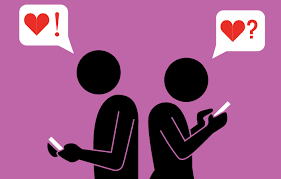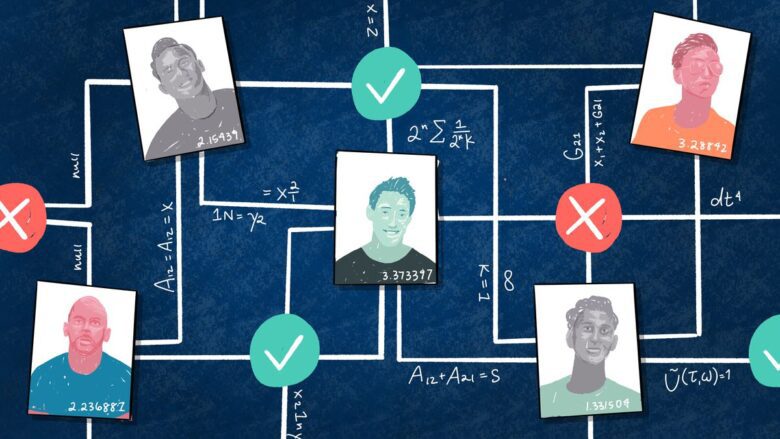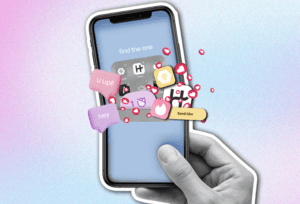As we all know a huge percentage of people nowadays find love online. Dating sites and apps have long been a staple of society; however, over the past decade, they have become the norm for meeting significant others. This is particularly relevant as people get older. After all, once you’re out of your 20s, there simply are not that many opportunities to meet people naturally.
One thing that is a bit of a mystery in terms of dating apps is how they match people with one another. The algorithms these services implement are carefully guarded intellectual property, but do they actually work? Answering this question requires digging into what is known about the algorithms to determine their strengths and problems.
Brief History
Algorithms have not always been the way that dating apps matched people up. In fact, dating sites initially began as online personal ads that could easily be searched. This allowed users to determine what they were looking for and filter ads by different characteristics.
While this method ensured that people could drill down into personal ads to find what they wanted, it also was certainly a tedious endeavor. The dating game largely shifted with the widespread popularity of Tinder.
Tinder was perhaps the first large scale dating app to utilize algorithms. The development of fields like machine learning and big data have enabled apps to operate through tracking preferences and actions more seamlessly, ushering in the current generation of app-based dating.
The Algorithms
Algorithms themselves have evolved a lot as well. When Tinder first started out, they utilized a ranking method that assigned each user a score. The score was based on how many people swiped right on them. However, it was not that simple. It also gave a user more points if the person right-swiping them had a high score. It used this data to show people others with similar scores.
However, Tinder has undergone a shift in their process and now utilizes a much more complicated system. This algorithm is aimed at presenting you with an ideal match based on your own preferences. It watches your behavior and attempts to learn.

For example, if you don’t swipe right on girls with red hair, it will show you fewer and eventually no girls with red hair. If you tend to swipe right on photos in outdoor settings, it will show you more people with outdoor photos. The exact details are not known; however, this is essentially how the algorithm is expected to work.
Tinder is a particularly image-based app as it collects little other information so it will rely heavily on machine learning processes that analyze and recognize features of photos. On the other hand, Hinge collects a wealth of information about people’s characteristics, occupations, education, and beliefs. It employs a different algorithm, known as the Gale-Shapley algorithm.
It was initially created in the 1960s to solve the college admission theoretical problem and the stable marriage theoretical problem. After an increasing number of swipes, it will provide more accurate people that a person is likely to be interested in, at least in theory. It does this by determining the weights of factors people prefer and assessing all options for those most favorable.
Do these algorithms work?
Experts agree that they do work to an extent. After all, any data scientist can tell you that algorithms are incredibly accurate. However, dating app algorithms do have identifiable problems. One is that dating and attraction is fairly subjective and apps can make incorrect inferences. It may assume you are rejecting a few people for one reason (i.e. blonde hair) when it may be for another (i.e. the city they live in). This problem should self-correct as you swipe more, but it is an issue to consider.
Additionally, dating app algorithms have been shown to be more likely to match people with others quite similar to themselves. This means you are more likely to be shown people of your race, education level, and income level. However, this does not necessarily translate to an effective match and can be fairly limiting.
Tips & Tricks
Ultimately, dating app algorithms seem to work fairly well but do have some major limitations. They will likely continue to improve over time. However, for now, many people have suggested tricks for more easily navigating the world of online dating. Here are a few tips:
· Your first message should comment about something in a person’s profile or photo.
· Avoid short first messages such as “hey.” Instead, shoot for 8-10 words with an emoji.
· Sunday nights will maximize your potential audience.
· Exchange numbers or ask for a date within the first 20 messages.
· Keep communication positive and not too serious at first
· Avoid having all selfies for photos
Ultimately, navigating the world of online dating may seem like a challenging task. With more practice your luck may increase, or you will reach that one match that will hopefully mean deleting the apps and never using them again. Happy swiping!



